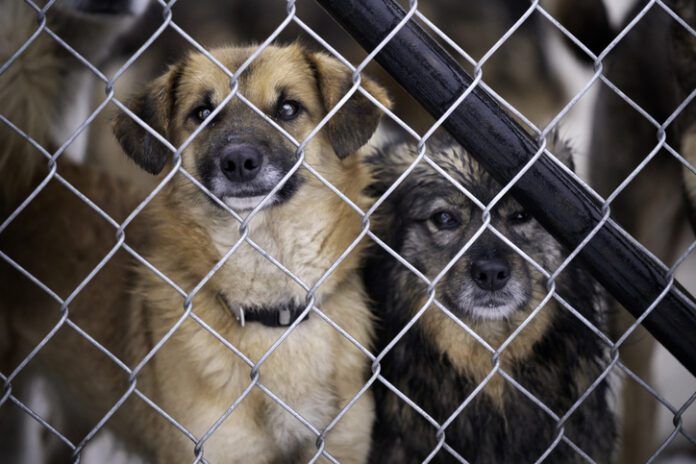As you have probably gleaned, I’m a big proponent of adopting dogs from shelters or rescues whenever possible. Every type of dog exists in a shelter somewhere, and no matter how long and specific the list of attributes you require in a dog may be, if you are patient and look long and hard enough, you can find a dog with those traits in a shelter or rescue group somewhere. Looking for an apricot-colored adult female Poodle? A young male German Wirehaired Pointer? If you are patient, you will find several candidates to choose from.
I know that there are some people who just really want a purebred puppy, I would not begrudge that experience for anyone. But if someone is looking for a young or adult dog of a certain breed, or is flexible about what breed of dog or puppy they want, I feel confident that they could find a candidate in a shelter—even if it turns out to be a shelter that’s sort of far from where they live. It’s not a problem we experience here in northern California—our shelters are packed to the roof!—but I’ve heard that there are parts of the country with relatively few dogs in the shelters.
However, there is one tactic that shelters and rescues sometimes take in an effort to place the dogs in their care that will automatically make me refuse to consider or promote that source: the high-pressure, life-or-death, “Fluffy only has 24 hours to live . . . unless you save him TODAY” sort of appeal.
It’s possible that shelters or rescues who take this tack actually place some of those dogs—but it’s also highly likely that people do desperate things in order to “save” those dogs, and some of them are not in the best interests of themselves or, often, the dogs! Overburdened rescue groups press their members to the breaking point to take “just one more,” past the point that they can truly afford or have time to care for. Dogs get shuffled from one temporary foster home to another, sometimes risking the spread of disease or parasites—and sometimes risking fights and injuries to the dogs in foster providers’ homes!
It’s not fair to anyone, especially exhausted experienced rescue volunteers and naïve newbie volunteers who have no idea of what they might be getting themselves into, when these “life or death,” “ticking clock” threats are made in order to place dogs. These tactics are more likely to make people who care the most feel the worst—and I daresay they don’t make people who care the least care even one bit more. In my experience, the bulk of the emotional punishment of these social media pleas falls on the people who are already doing something to help a rescue or shelter.
Here is a post that describes all of the bad things that can result when shelters use social media to try to place dogs with a “euthanasia list” plea. If you’re involved with a shelter or rescue group that has taken this tack, please read the post and reconsider.







Very timely article and informative link to the Bissell Foundation. Compelling or pressuring someone to adopt a dog with a deeply emotional plea – no matter how valid – is very often the catalyst for bad decisions.
I frequently talk to people at public events held or sponsored by shelters and rescues who tell me some version of, “I feel terrible. I’d love to adopt a dog but (I work too many hours, I don’t have enough time to care for a dog, we’re not ready to make that commitment, our kids are too young, etc., etc., etc.).
Whenever I hear that I give them the same reply. They’re smart for taking the “big picture” view of their lives, and making well-considered decisions, and that’s the right thing to do. Nothing to apologize for.
I always add that our shelters and fosters are maxed out and we’re all playing cleanup because of other people’s bad decisions.
It’s often better not to adopt for good reasons than to adopt for the wrong reasons and contribute to the cycle of harm.
It’s not just rescues and shelters who do this. Well-meaning individuals post on social and send emails daily (sometimes multiple times a day) with the same pleas. Believe me, as a rescuer who can’t save them all (who has only been able to save a drop in the ocean and currently can’t take in any more dogs — sound familiar, rescues?), it breaks my heart, but I can’t do anything. And yes, I feel awfully guilty when I reply “I can’t” to the countless emails seeking my rescue’s help.
I agree with Christopher — it’s far kinder to know your limits and abide by them than to well-meaningly cause suffering.
Thanks for this, Nancy. We are in a terrible situation regarding the plight of animals worldwide. And we all can and should do what we can — but only what we can afford to do with whatever resources we have.
My Freyja Grey was on the Euth list in Hesperia, California. It was just her photo between two pit bulls with the caption “red carded” underneath. No more information. I saw her by accident. Hesperia is where Diana pawPrints, her Mom and the rest of the litter originated before they were rescued by one of my local rescue organizations. I adopted her from them and even have her intake page so knew her approximate birthday. A blog I post on was discussing whether we celebrate our dog’s birthday so that got me thinking what was happening at her “birth” location and so I went to look at the Hesperia animal control website and there was Freyja. I thought she was a Keeshond and couldn’t imagine why she would be red carded. Diana and I drove up the next day, adopted her and brought her home. I’m sure it was one of those Covid adoptions by people that didn’t know dogs or had the patience for a shelter rescue. She had been returned twice for destructive behavior, the second time within 24 hours. Well, I don’t work so could stay home and work with her. I have gone through the puppy stages three times on my own so had the patience to work with an older dog. Was she destructive? A bit. Taught Diana to knock over trash cans (she had originally been picked up off the streets) so I just secured them. Chewed a blouse and a shoe, so I started to set the alarm at 6am to take her out and gradually made it a half our later and later until she was on my sleep schedule. She learned to sleep on a bed, play with toys, the play bow and the rhythms of the household for her big sister, Diana. She has never been left alone. If I have to leave, Diana is with her. If I have to take Diana, Freyja comes along. She learned her name within a week. She has been a fabulous addition to our family. I wasn’t looking for a dog and wasn’t pressured into adopting her. Yes, it was an impulse motivated by that “red carded”. But I don’t regret it.
Thank you for posting this, Nancy.
I’ve been fostering dogs for decades and allowed myself to get pressured into fostering and ultimately adopting one of those “urgent” dogs. The shelter described her as both dog- and people friendly, neither of which turned out to be the case. While we were fortunate to have the time and resources to consistently work on her issues, it has been a long and expensive process.
At 9 years of age she is finally at a point where she is a pretty balanced member of our household. I love her dearly but sometimes wonder how many more dogs I could have helped, especially since her dog reactivity meant I couldn’t safely foster anymore.
I will share this article with my friends in the rescue community. Thank you!
I see it every day on a ‘Neighbor’ website. It breaks my heart but at the same time wonder why the sudden rush. ‘Just Today’ this dog dies! If someone works at a shelter, they should know how long a dog has when they arrive and be capable of working harder to intercept this problem. Not every person can adopt a dog not knowing his or her background. Shelters also keep secrets about the dog’s temperament, so be careful.